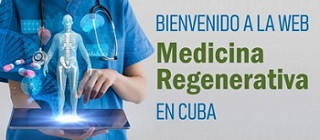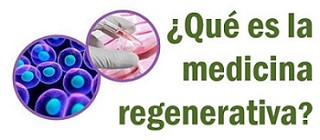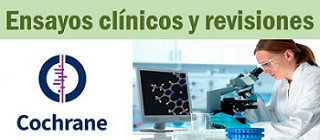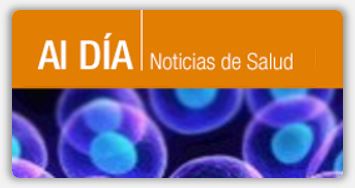Evaluation of the Delivery of Mesenchymal Stem Cells into the Root Canal Space of Necrotic Immature Teeth after Clinical Regenerative Endodontic Procedure
Tyler W. Lovelace, DDS,* Michael A. Henry, DDS, PhD,* Kenneth M. Hargreaves, DDS, PhD,*†
and Anibal Diogenes, DDS, MS, PhD*
Abstract
Introduction: Immature teeth with open apices treated
with conventional nonsurgical root canal treatment
often have a poor prognosis as a result of the increased risk of fracture and susceptibility to recontamination.
Regenerative endodontics represents a new treatment
modality that focuses on reestablishment of pulp vitality and continued root development. This clinical procedure relies on the intracanal delivery of a blood clot (scaffold), growth factors (possibly from platelets and dentin), and stem cells. However, to date, the clinical presence of stem cells in the canal space after this procedure has not been demonstrated. The purpose of this clinical study was to evaluate whether regenerative endodontic procedures are able to deliver stem cells into the canal space of immature teeth in young patients and to identify the possible tissue origin for these cells.
Methods:
After informed consent, the first appointment onsisted
of NaOCl irrigation and treatment with a triple antibiotic
paste. One month later, the root canal space was irrigated with sterile saline, and bleeding was evoked
with collection of samples on paper points. Real-time
reverse-transcription polymerase chain reaction and
immunocytochemistry were conducted to compare the
gene transcripts and proteins found in the root canal
sample with levels found in the systemic circulation.
Results: Molecular analyses of blood collected from
the canal system indicated the significant accumulation of transcripts for the stem cell markers CD73 and CD105 (up to 600-fold), compared with levels found in the systemic blood. Furthermore, this effect was selective because there was no change in expression of the differentiation markers ALK-P, DSPP, ZBTB16, and CD14.
Histologic analyses demonstrated that the delivered cells expressed both CD105 and STRO-1,markers for a subpopulation of mesenchymal stem cells.
Conclusions: Collectively,these findings demonstrate that the evokedbleeding step in regenerative procedures triggers the significant accumulation of undifferentiated stem cells into the canal space where these cells might contribute to the regeneration of pulpal tissues seen after antibiotic paste
therapy of the immature tooth with pulpal necrosis.
(J Endod 2011;37:133–138)
Nature Reviews Clinical Oncology 8, 677-688 (November 2011) | doi:10.1038/nrclinonc.2011.141
Cell-based therapies, such as adoptive immunotherapy and stem-cell therapy, have received considerable attention as novel therapeutics in oncological research and clinical practice. The development of effective therapeutic strategies using tumor-targeted cells requires the ability to determine in vivo the location, distribution, and long-term viability of the therapeutic cell populations as well as their biological fate with respect to cell activation and differentiation. In conjunction with various noninvasive imaging modalities, cell-labeling methods, such as exogenous labeling or transfection with a reporter gene, allow visualization of labeled cells in vivo in real time, as well as monitoring and quantifying cell accumulation and function. Such cell-tracking methods also have an important role in basic cancer research, where they serve to elucidate novel biological mechanisms. In this Review, we describe the basic principles of cell-tracking methods, explain various approaches to cell tracking, and highlight recent examples for the application of such methods in animals and humans
Bone Marrow Stem Cell Derived Paracrine Factors for Regenerative Medicine
Tom J. Burdon, 1 Arghya Paul, 1 Nicolas Noiseux, 2 Satya Prakash, 1 and Dominique Shum-Tim 3, 4 *
1Biomedical Technology and Cell Therapy Research Laboratory, Department of Biomedical Engineering, Faculty of Medicine, Duff Medical Building, 3775 University Street, McGill University, QC, Canada H3A 2B4
2Dèpartment de Chirurgie Cardiaque, Centre Hospitalier de l’Université de Montréal, Pavillon Hôtel-Dieu, Université de Montréal, Montréal, QC, Canada H3C 3J7
3Divisions of Cardiac Surgery and Surgical Research, The Montreal General Hospital, McGill University Health Center, QC, Canada H3G 1A4
4The Royal Victoria Hospital, Suite S8.73.B, 687 Pine Avenue West, Montréal, QC, Canada H3A 1A1
*Dominique Shum-Tim: Email: dshumtim@yahoo.ca
Academic Editor: Helen A. Papadaki
Received August 31, 2010; Accepted October 12, 2010.
This is an open access article distributed under the Creative Commons Attribution License, which permits unrestricted use, distribution, and reproduction in any medium, provided the original work is properly cited.
* Other Sections▼
o Abstract
o 1. Introduction
o 2. Emerging Role of BMSCs for Cell and Tissue Regeneration Therapy
o 3. Exploiting the Cell Fusion and Differentiation Properties of BMSCs: Potentials and Limitations
o 4. Exploiting the Paracrine Factors Released from BMSCs
o 5. Recent Applications of Stem Cell-Conditioned Media in the Biomedical Fields
o 6. Future Directions
o 7. Conclusion
o References
Abstract
During the past several years, there has been intense research in the field of bone marrow-derived stem cell (BMSC) therapy to facilitate its translation into clinical setting. Although a lot has been accomplished, plenty of challenges lie ahead. Furthermore, there is a growing body of evidence showing that administration of BMSC-derived conditioned media (BMSC-CM) can recapitulate the beneficial effects observed after stem cell therapy. BMSCs produce a wide range of cytokines and chemokines that have, until now, shown extensive therapeutic potential. These paracrine mechanisms could be as diverse as stimulating receptor-mediated survival pathways, inducing stem cell homing and differentiation or regulating the anti-inflammatory effects in wounded areas. The current review reflects the rapid shift of interest from BMSC to BMSC-CM to alleviate many logistical and technical issues regarding cell therapy and evaluates its future potential as an effective regenerative therapy.
Myocardial Infarction and Left Ventricular Dysfunction
Samer Mansour, 1, 2 * Denis-Claude Roy, 3 Vincent Bouchard, 4 Louis Mathieu Stevens, 2, 5 Francois Gobeil, 1 Alain Rivard, 1, 2 Guy Leclerc, 1 François Reeves, 1, 2 and Nicolas Noiseux 2, 5 *
1Division de Cardiologie, Département de Médecine, Centre Hospitalier de l’Université de Montréal (CHUM), 3840, Rue Saint Urbain, Montréal, Québec, Canada H2W 1T8
2Axe Cardio-Métabolique, Centre de Recherche du CHUM (CRCHUM), Montréal, Québec, Canada H2W 1T7
3Département d’Hématologie, Hôpital Maisonneuve-Rosemont (HMR), Montréal, Québec, Canada H1T 2M4
4Faculté de Médicine, Université de Montréal, Montréal, Québec, Canada H3C 3J7
5Division de Chirurgie Cardiaque, Département de Chirurgie, Centre Hospitalier de l’Université de Montréal (CHUM), Montréal, Québec, Canada H2W 1T8
*Samer Mansour: Email: samer.mansour@sympatico.ca and
*Nicolas Noiseux: Email: noiseuxn@videotron.ca
Academic Editor: Mark R. Litzow
Received August 22, 2010; Accepted December 12, 2010.
This is an open access article distributed under the Creative Commons Attribution License, which permits unrestricted use, distribution, and reproduction in any medium, provided the original work is properly cited.
* Other Sections▼
o Abstract
o 1. Introduction
o 2. Methods
o 3. Results
o 4. Discussion
o References
Abstract
Bone marrow stem cell therapy has emerged as a promising approach to improve healing of the infarcted myocardium. Despite initial excitement, recent clinical trials using non-homogenous stem cells preparations showed variable and mixed results. Selected CD133+ hematopoietic stem cells are candidate cells with high potential. Herein, we report the one-year safety analysis on the initial 20 patients enrolled in the COMPARE-AMI trial, the first double-blind randomized controlled trial comparing the safety, efficacy, and functional effect of intracoronary injection of selected CD133+ cells to placebo following acute myocardial infarction with persistent left ventricular dysfunction. At one year, there is no protocol-related complication to report such as death, myocardial infarction, stroke, or sustained ventricular arrhythmia. In addition, the left ventricular ejection fraction significantly improved at four months as compared to baseline and remained significantly higher at one year. These data indicate that in the setting of the COMPARE-AMI trial, the intracoronary injection of selected CD133+ stem cells is secure and feasible in patients with left ventricle dysfunction following acute myocardial infarction.
Abstract
In recent years, clinical trials with stem cells have taken the emerging field in many new directions. While numerous teams continue to refine and expand the role of bone marrow and cord blood stem cells for their vanguard uses in blood and immune disorders, many others are looking to expand the uses of the various types of stem cells found in bone marrow and cord blood, in particular mesenchymal stem cells, to uses beyond those that could be corrected by replacing cells in their own lineage. Early results from these trials have produced mixed results often showing minor or transitory improvements that may be attributed to extracellular factors. More research teams are accelerating the use of other types of adult stem cells, in particular neural stem cells for diseases where beneficial outcome could result from either in-lineage cell replacement or extracellular factors. At the same time, the first three trials using cells derived from pluripotent cells have begun.
Articulo completo a través de http://www.biomedcentral.com/1741-7015/9/52
Abstract
Bone marrow stem cell therapy has emerged as a promising approach to improve healing of the infarcted myocardium. Despite initial excitement, recent clinical trials using non-homogenous stem cells preparations showed variable and mixed results. Selected CD133+ hematopoietic stem cells are candidate cells with high potential. Herein, we report the one-year safety analysis on the initial 20 patients enrolled in the COMPARE-AMI trial, the first double-blind randomized controlled trial comparing the safety, efficacy, and functional effect of intracoronary injection of selected CD133+ cells to placebo following acute myocardial infarction with persistent left ventricular dysfunction. At one year, there is no protocol-related complication to report such as death, myocardial infarction, stroke, or sustained ventricular arrhythmia. In addition, the left ventricular ejection fraction significantly improved at four months as compared to baseline and remained significantly higher at one year. These data indicate that in the setting of the COMPARE-AMI trial, the intracoronary injection of selected CD133+ stem cells is secure and feasible in patients with left ventricle dysfunction following acute myocardial infarction.
AbstractDuring the past several years, there has been intense research in the field of bone marrow-derived stem cell (BMSC) therapy to facilitate its translation into clinical setting. Although a lot has been accomplished, plenty of challenges lie ahead. Furthermore, there is a growing body of evidence showing that administration of BMSC-derived conditioned media (BMSC-CM) can recapitulate the beneficial effects observed after stem cell therapy. BMSCs produce a wide range of cytokines and chemokines that have, until now, shown extensive therapeutic potential. These paracrine mechanisms could be as diverse as stimulating receptor-mediated survival pathways, inducing stem cell homing and differentiation or regulating the anti-inflammatory effects in wounded areas. The current review reflects the rapid shift of interest from BMSC to BMSC-CM to alleviate many logistical and technical issues regarding cell therapy and evaluates its future potential as an effective regenerative therapy.
K Malliaras1, M Kreke2 and E Marbán1
1. 1Cedars-Sinai Heart Institute, Los Angeles, California, USA
2. 2Capricor Inc., Los Angeles, California, USA
Correspondence: E Marbán, (Eduardo.Marban@csmc.edu)
Received 27 June 2011; Accepted 29 June 2011; Published online 7 September 2011.
Stem cell therapy has emerged as a potential therapeutic strategy for myocardial infarction (MI). Multiple cell types used to regenerate the injured heart have been tested in clinical trials. The results of studies of skeletal myoblasts (SKMs) have been resoundingly negative, and the bone marrow–derived-cell experience leaves much to be desired. A number of lessons arise from the large-scale bone marrow–derived-cell trials: (i) efficacy has been inconsistent and, overall, modest; however, unexpectedly meaningful benefits on clinical end points have been reported; (ii) cardiac engraftment of cells is disappointingly low, and delivery methods need to be optimized and combined with strategies to boost retention; (iii) the cardiomyogenic potential of bone marrow cells is low; however, functional benefit can be achieved through indirect pathways; and (iv) autologous cell therapy has severe limitations; highly standardized allogeneic cell products are attractive. Given the spotty trajectory of cell therapy to date, a more systematic approach to product development and preclinical optimization will facilitate more effective clinical translation.
Articulo completo a través del HINARI en Clinical Pharmacology and Therapheutics





